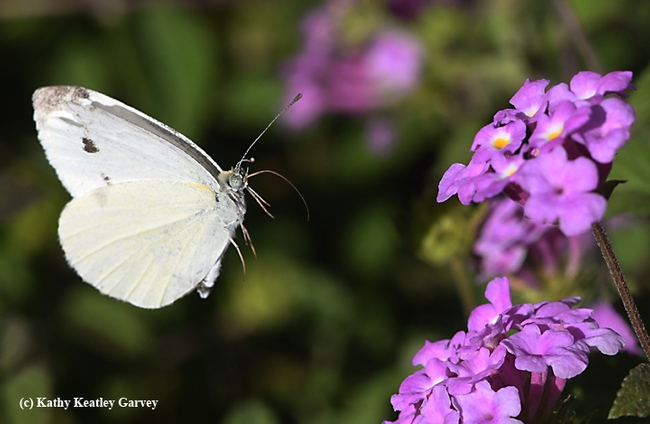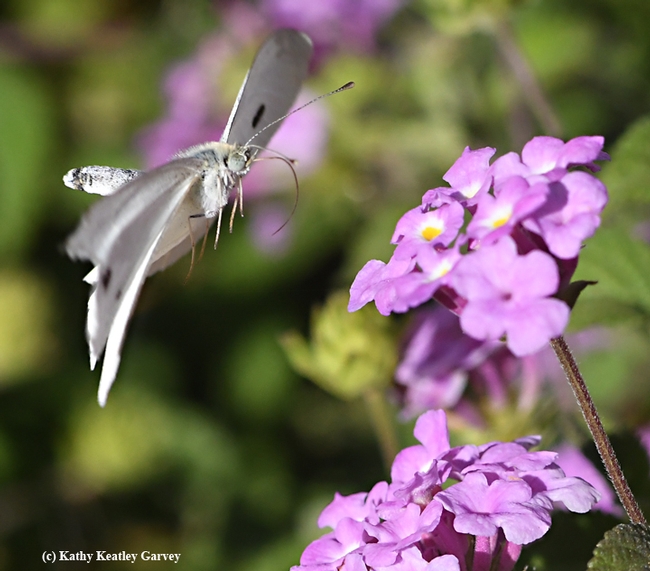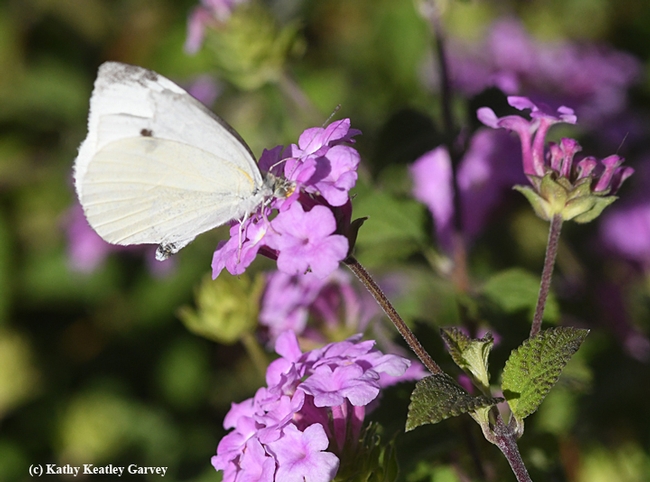- Author: Kathy Keatley Garvey
Praying, preying, or peering?
This female praying mantis, a Stagmomantis limbata, selects a patch of red Lantana to watch for pollinators.
Her spiked forelegs resting, her eyes always watching but her body as still as a stone, she makes an incredible predator portrait. That triangular head, those bulging eyes, that pencil-thin "neck."
Her common names included "bordered mantis, bosque mantis, Arizona mantis, and New Mexico praying mantis." This species is native to North America and considered most prevalent in the southwestern United States.
What's for breakfast? A bee, a butterfly, a syrphid fly?
What's for lunch? What's for dinner? What's for snacks?
She need not worry. She's a great ambush predator.
A limbata in the Lantana.
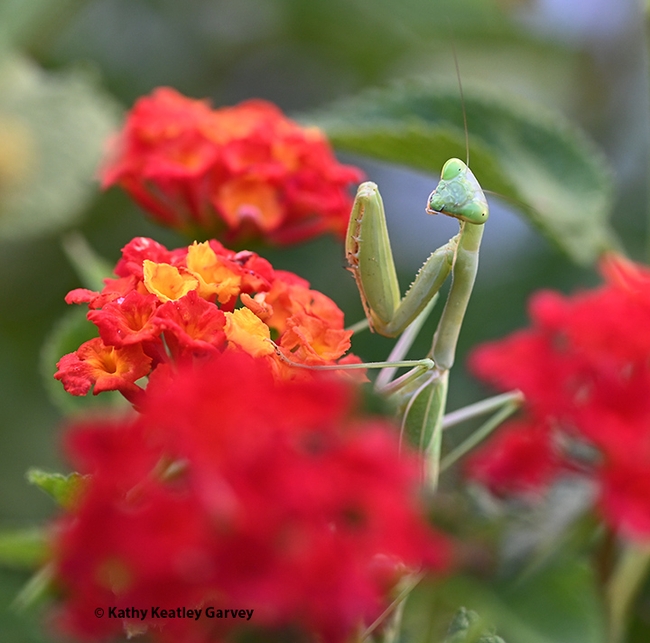
- Author: Kathy Keatley Garvey
Can a praying mantis catch a monarch?
Yes, it can. And yes, it does.
It was Sept. 14, 2013. As I approached a Vacaville supermarket, I noticed pink lantana blooming furiously near the entrance, and then, a familiar-looking butterfly quietly sipping nectar.
"Ah, there's a monarch," I observed.
I wasn't the only one watching the monarch.
A female praying mantis, Stagmomantis limbata, was watching it, too.
In a nano-second, it was all over.
A meal for the mantis.
One less monarch to migrate.
Yes, it can. And yes, it does.
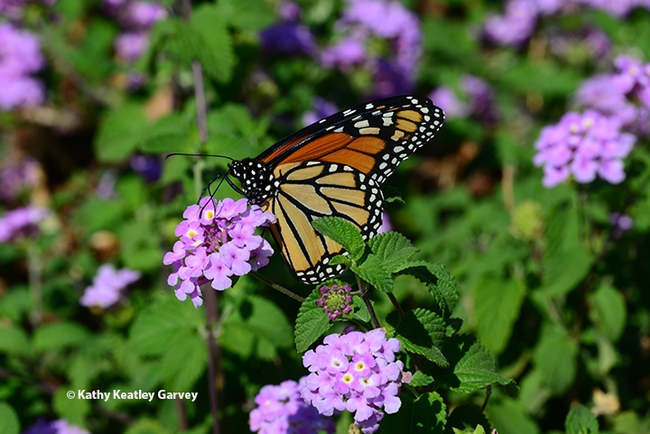
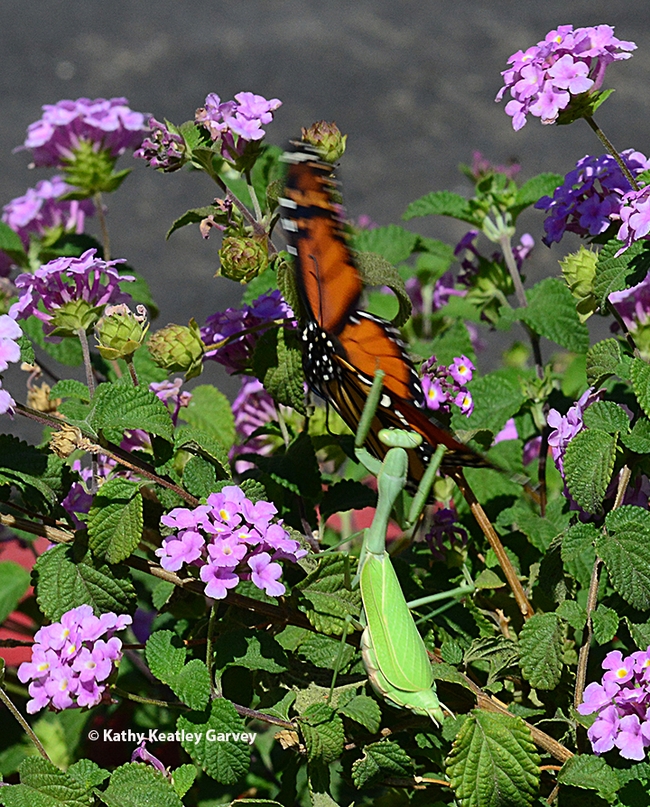
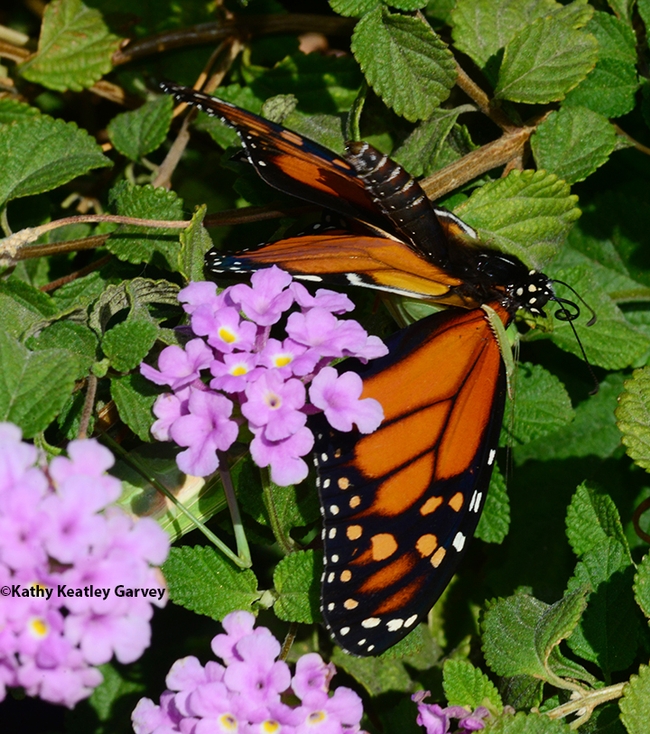
- Author: Kathy Keatley Garvey
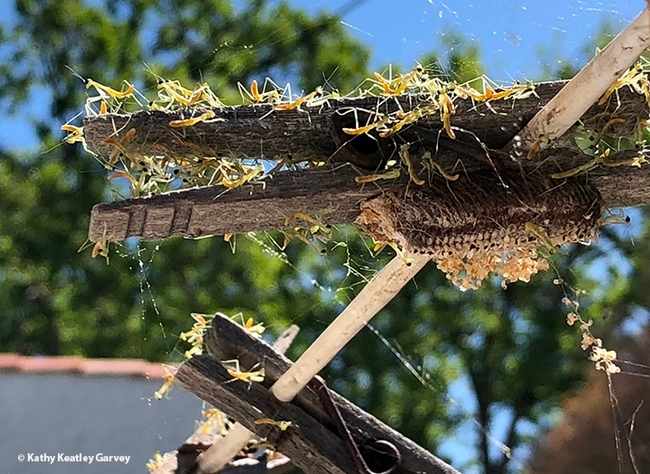
Last fall, a Stagmomantis limbata deposited her egg case, or ootheca, on a clothespin on our outdoor clothesline. On April 9, the clothespin sprang to life. Hundreds of nymphs emerged, scrambled away, and vanished.
Some wandered around on the clothesline. Some ate one another. Some survived to adulthood.
We saw only four in our pollinator garden: a female in the patch of lion's tail, Leonotis leonurus; a female on the Mexican sunflower Tithonia rotundifola; and a male and female in the African blue basil, Ocimum kilimandscharicum × basilicum 'Dark Opal."
They appeared, disappeared, and never re-appeared.
Meanwhile, our lantana, Lantana camara, proved to be a magnet for such pollinators as honey bees, syrphid flies, skippers and cabbage white butterflies, but nary a praying mantis.
Fast forward to the late afternoon of Sept. 25. There perched in the flood of red and gold blossoms was a gush of green, a beautiful gravid praying mantis, S. limbata, looking as if she'd never missed a meal and looking quite Mama-like.
How did we ever miss her?
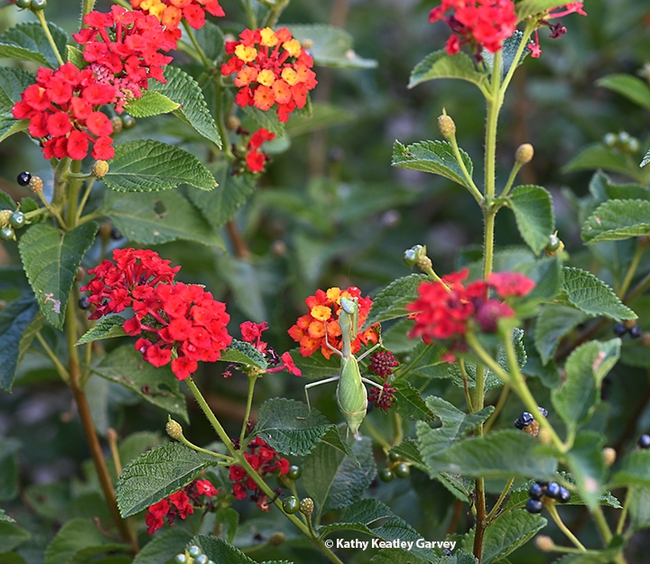

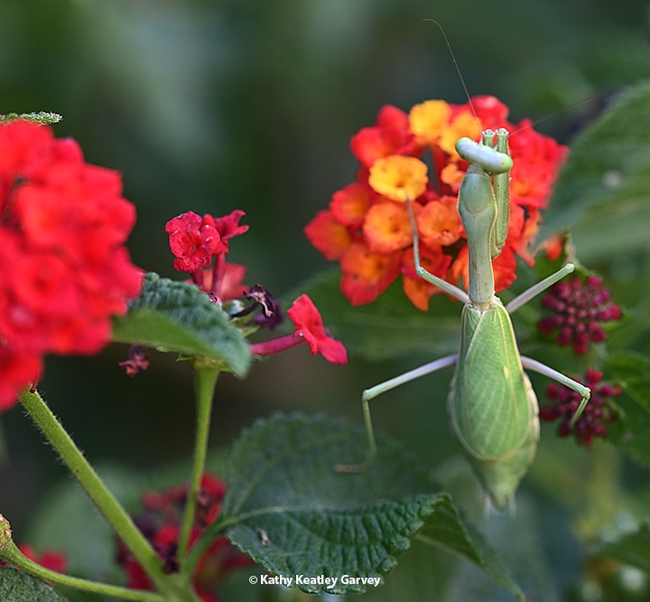
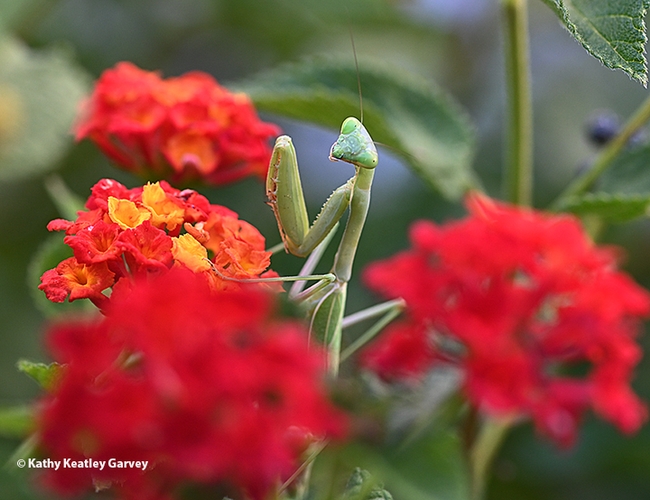
- Author: Kathy Keatley Garvey
Where are you, Gulf Fritillaries?
The Gulf Fritillary (Agraulis vanillae) population seems to be diminishing this year around Solano and Yolo counties.
A few here, a few there, but not in the large numbers of last year.
Last summer the Gulf Frits overwhelmed our passionflower vine (Passiflora), their host plant, and skeletonized it.
Which is what we want them to do. We plant Passiflora for them, not for the fruit or the blossoms. On a good year, they eat it all--blossoms, fruit, leaves and stems--and look for more.
The history of the butterfly in California is as striking as its silver-spangled, reddish-orange coloring.
“It first appeared in California in the vicinity of San Diego in the 1870s,” says noted butterfly expert Art Shapiro, distinguished professor of evolution and ecology at the University of California, Davis. “It spread through Southern California in urban settings and was first recorded in the Bay Area about 1908. It became a persistent breeding resident in the East and South Bay in the 1950s and has been there since.”
Shapiro, who has monitored butterflies in central California since 1972 and maintains a research website at http://butterfly.ucdavis.edu, says the Gulf Frit “apparently bred in the Sacramento area and possibly in Davis in the 1960s, becoming extinct in the early 1970s, then recolonizing again throughout the area since 2000.”
It's making a comeback, but this year it doesn't seem to be "coming back" so much.
Want to attract the Gulf Frit? Plant its host plant and some of its favorite nectar plants. In our pollinator garden in Vacaville, their favorite nectar sources include the butterfly bush (Buddleia), Mexican sunflower (Tithonia) and lantana (genus Lantana.)
Plant them and they will come--if they're around!
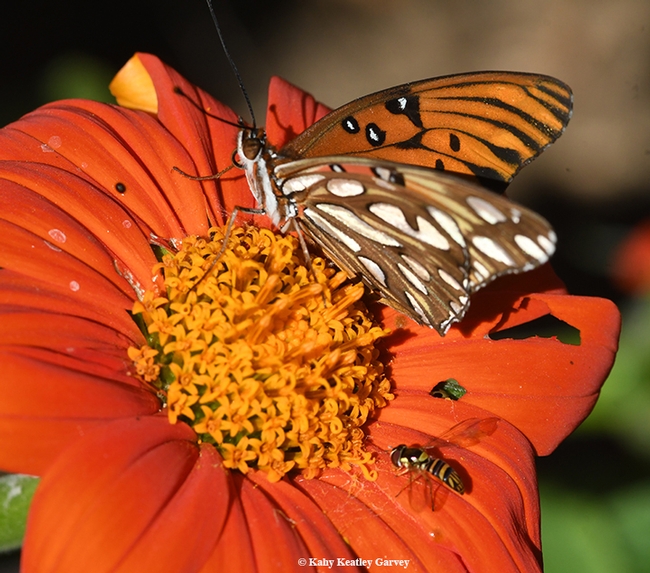
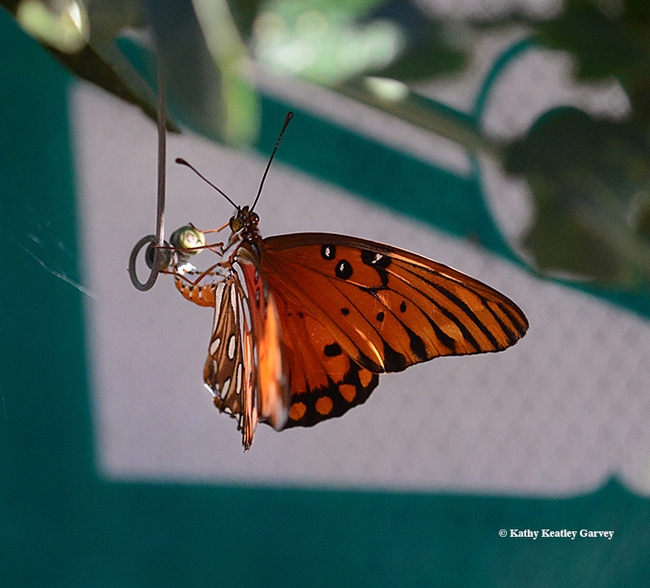
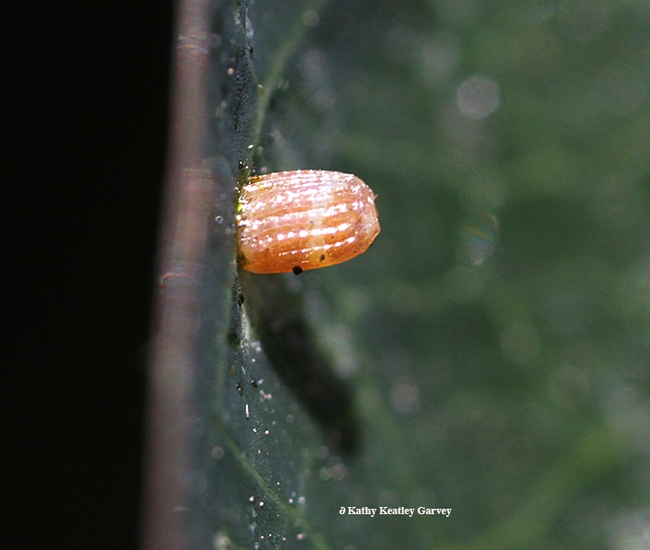
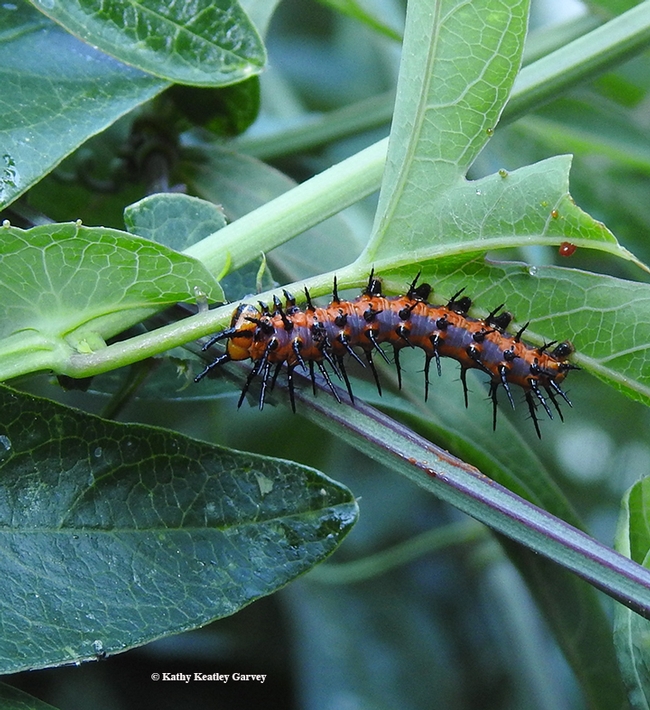
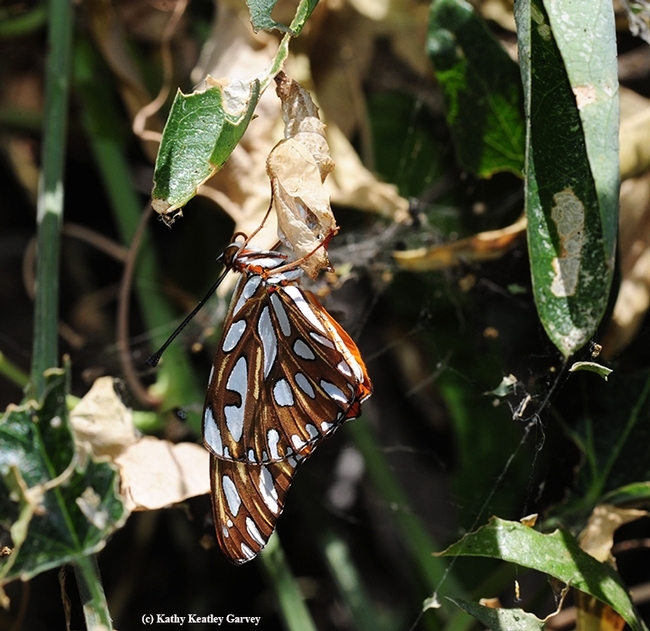
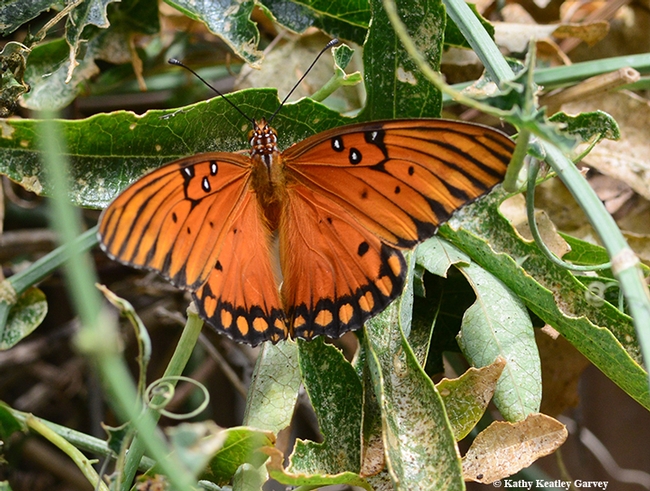
- Author: Kathy Keatley Garvey
They're everywhere.
But they're not welcome.
Agriculturists who commercially grow cabbage and other cucurbits aren't fond of the cabbage white butterlfy, Pieris rapae, because its larvae are pests that ravish their crops.
No welcome mat for them.
This butterfly, however, is welcome--sort of--starting Jan. 1 of every year in the three-county area of Sacramento, Solano and Yolo. It's the target of the "Beer for a Butterfly Contest," sponsored by Art Shapiro, UC Davis distinguished professor of evolution and ecology. The first one collected in the three-county area collects a pitcher of beer or its equivalent.
Professor Shapiro, who maintains a research website at http://butterfly.ucdavis.edu, launched the contest in 1972 as part of his long-term studies of butterfly life cycles and climate change. Pieris rapae is emerging earlier and earlier as the regional climate has warmed, he says. "The cabbage white is now emerging a week or so earlier on average than it did 30 years ago here."
He usually wins the suds-for-a-bug contest; he has been defeated only four times, and all by UC Davis graduate students. This year (2018) he collected the cabbage white butterfly, Pieris rapae, at 11:23 a.m. Friday, Jan. 19 in one of his frequented sites—a mustard patch by railroad tracks in West Sacramento, Yolo County. (See Bug Squad blog)
Last weekend we spotted a cabbage white nectaring on lantana, a common occurrence. What was not so common was that this one wasn't skittish. It lingered like a ballerina anticipating a curtain call, and allowed us to photograph it in flight.
